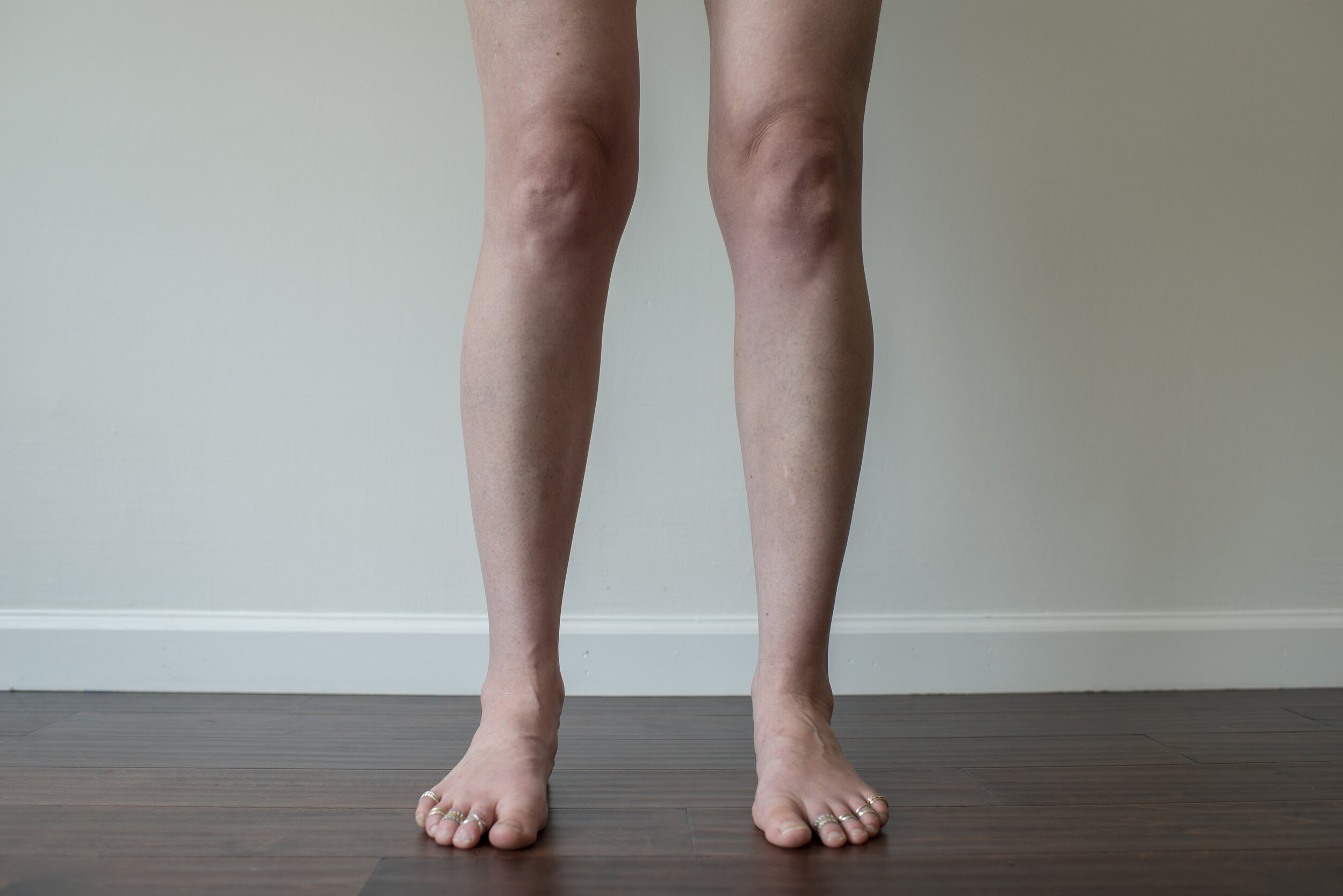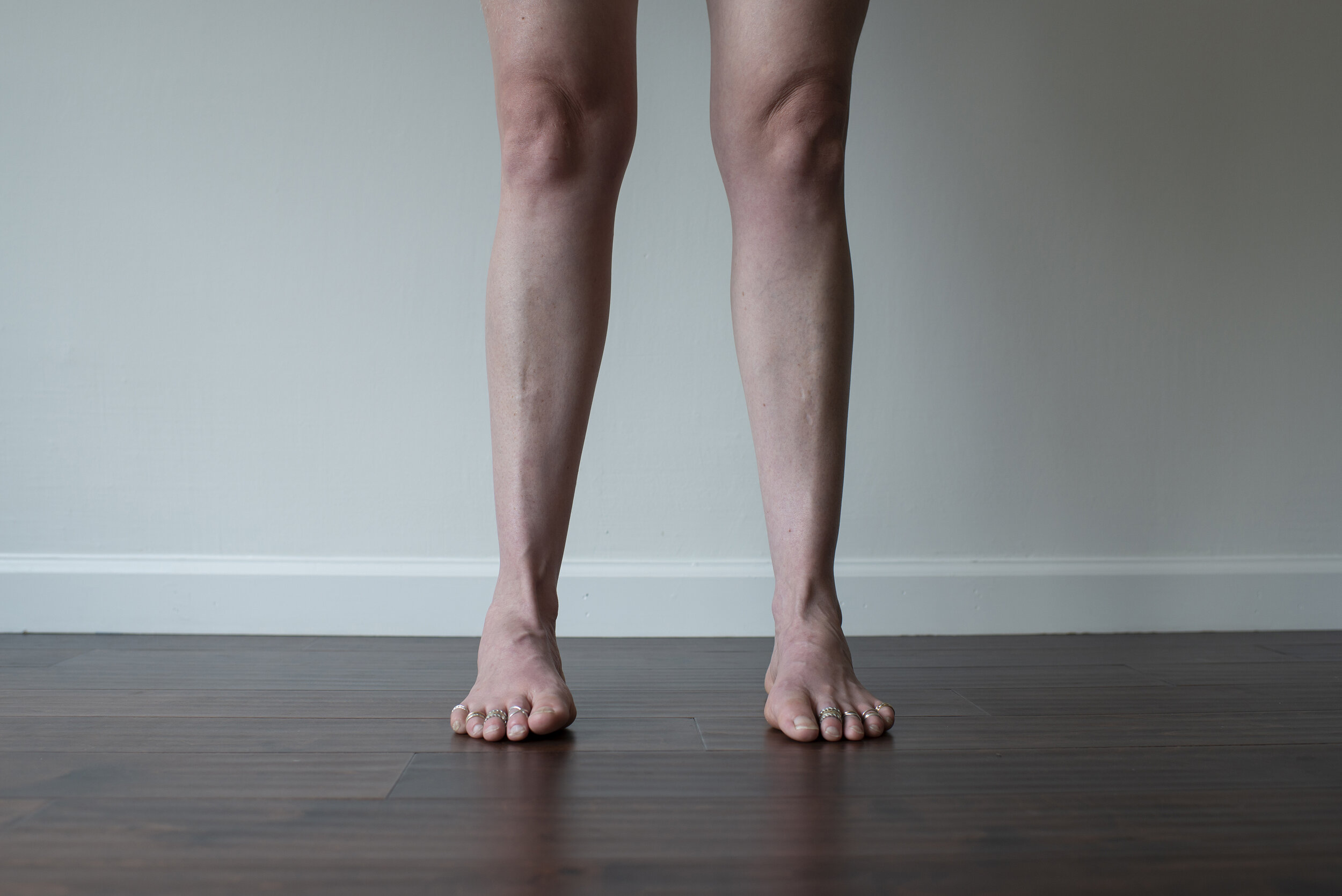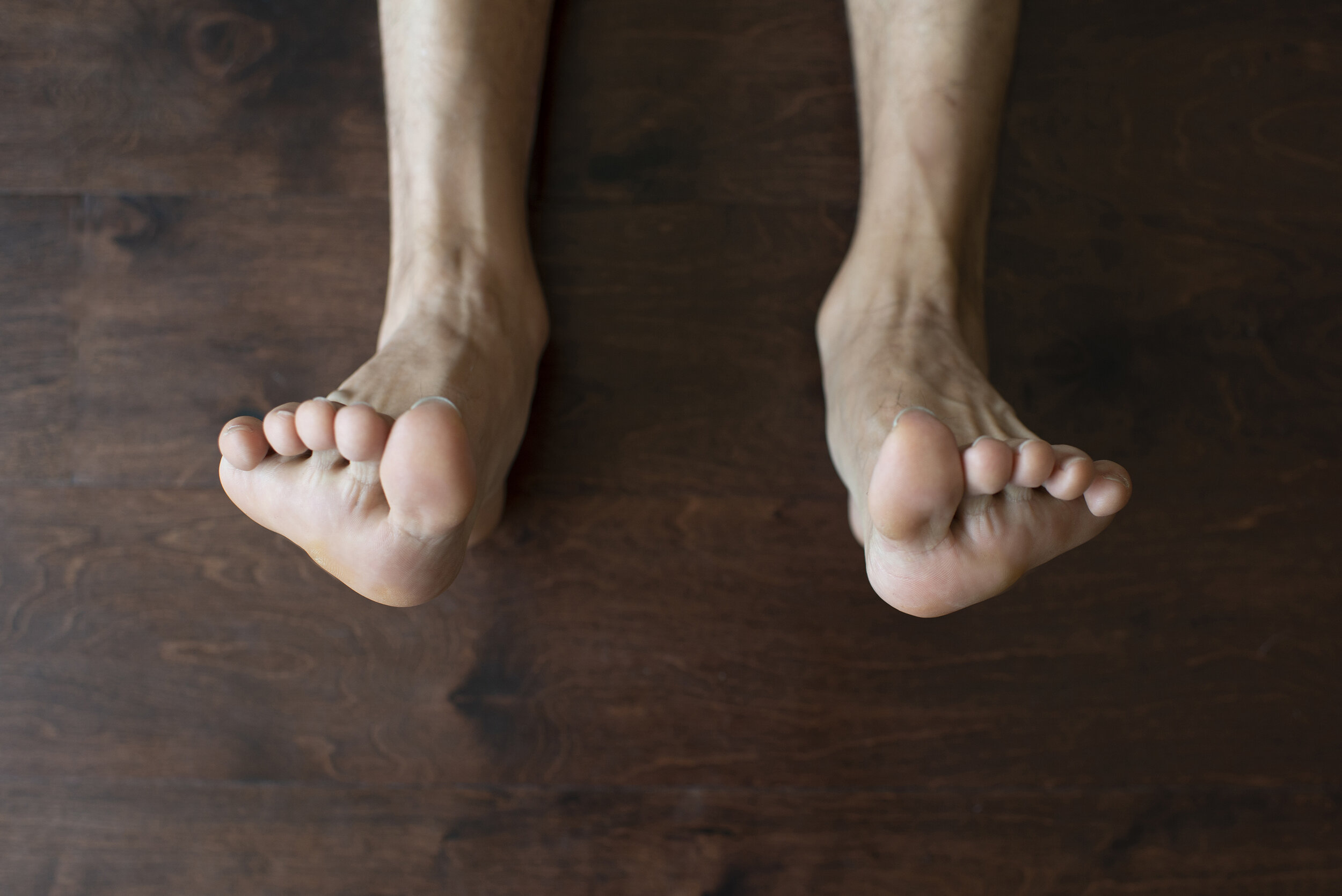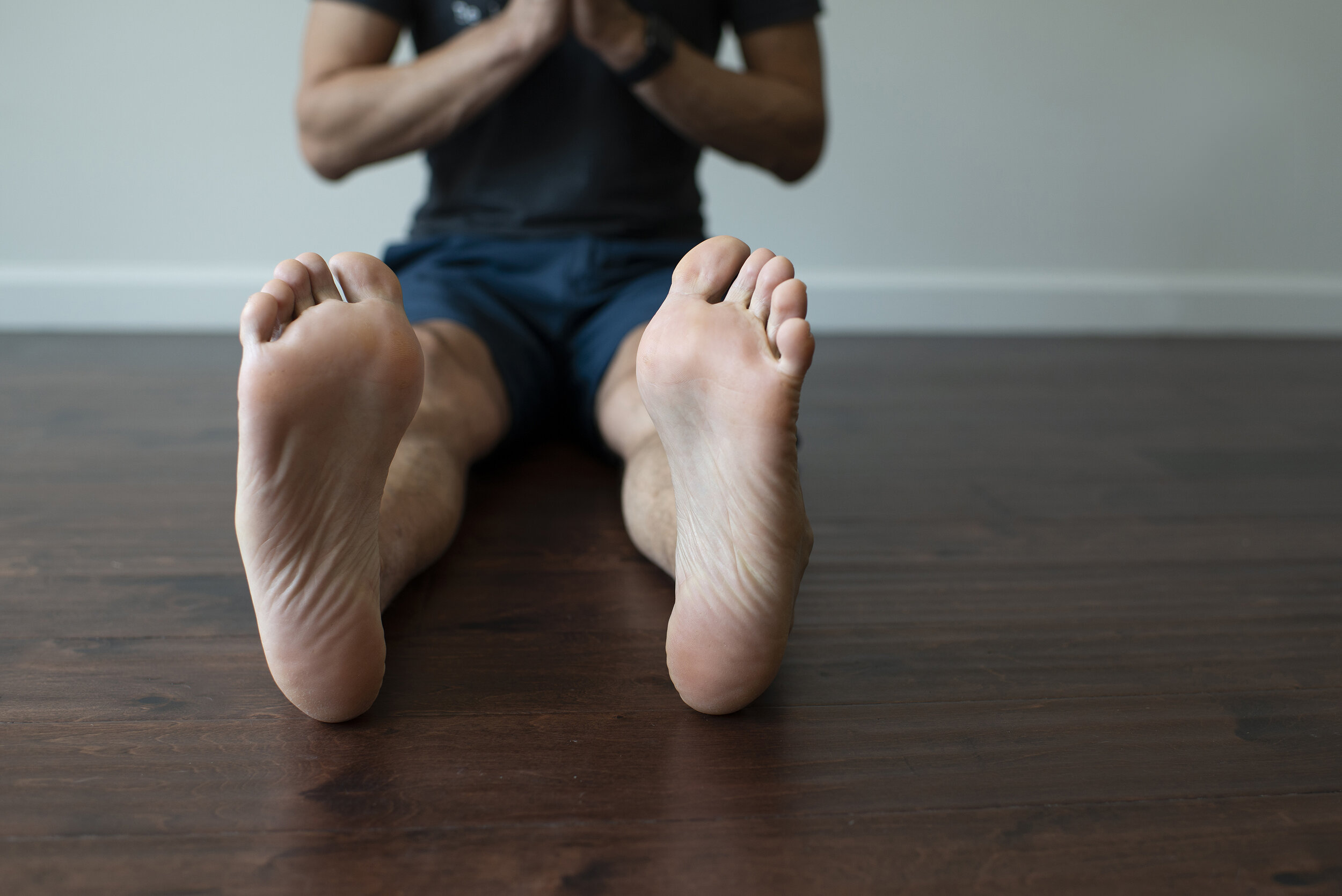Pronation & Supination in Your Feet: Learn The Difference
How we distribute weight in our feet is not that exciting perhaps, but it's important.
This blog is part of my Magical Feet Series: Adventure into Part 1 and Part 2
It's not uncommon for us to consistently put more weight on the inside edge (pronation) or outside edge (supination) of the feet and if you've had the common experience of discovering one side of your shoe showing excessive wear it might indicate a consistent over-pronouncement of weight distribution. The weight shifting from side to side is helpful for the act of walking as this natural alignment helps give spring to your step and absorbs impact: the foot in supination as it hits the ground, moves into pronation as it takes your full weight, and returns to supination as the foot leaves the ground.* Working towards at the very least an awareness of your natural tendencies when it comes to weight distribution and if/when noticing an over-pronouncement then beginning to move towards a more balanced and neutral weight distribution while sitting, standing and balancing in yoga can really benefit your practice.
And well, what we do off the mat is what we do on the mat... and because the body is majestically interwoven - each part linked to each other, means that pronation and supination affect other joints higher in the kinetic chain. To relate this to the above: when the inner feet collapse due to pronation, the shin and thigh bones roll in and pull the knee joint along with them. Over time this can lead to uneven and excessive wear and tear at the inner knee joint, but when more weight lands and rests on the outer feet, as in supination, the shin turns out causing the knee joint to be pulled out and more wear and tear can show up at the outer knees instead**.
Because our feet are our literal foundation whatever happens in the feet carries up through the leg joints to the whole body. Gaining awareness, noticing and mindful standing and moving is what this series is all about.
Can you spot which image demonstrates supination and which one demonstrates pronation? What can you observe about the shins and knees in each image?
In standing poses or as we prepare for one-legged balance poses, we are looking towards the weight of your body being evenly distributed between the outer and inner foot and between the heel and ball of the foot. As you stand, become aware of the four corners of the foot: the base of the big toe, the base of the little toe, the inner heel, and the outer heel. If the inner points of the foot feel heavy, the arch of the foot is probably collapsing (pronation). If the outer aspect of the foot is heavy, the arch of the foot may be nice and high--which is good--but the base of the big toe is probably lifting and the outer ankle may feel strained (supination). To make a strong, well-balanced foundation for your standing balance, your arch should feel lifted and light, while the inner heel and base of your big toe stay grounded.*
When in seated poses, I like to think about the inner and outer leg engaging evenly to keep the inside and outside edges of the foot more or less evenly side by side. You can play with this by sitting in Dandasana with your feet against a wall or in Pashimottanasana with your feet pressing into a block.
Above: Feet in Pronation | Below: Feet in Supination
And just in case you're nerdy enough to want to know this: The muscles you use to control supination are the peroneus longus and peroneus brevis. They originate on the fibula, the outer and smaller of the two lower leg bones. These muscles travel down the outer calf, and their tendons go behind the outer anklebone. The larger and stronger of the two muscles is the peroneus longus, and its tendon crosses under the arch of the foot to attach to the underside of the arch on the medial (inner) side. When the peroneus longus contracts, it pronates the foot; if you're standing, it presses the base of the big toe into the ground.*
Homework: Find Neutral Position*
Let's balance supination and pronation in the feet:
If you naturally supinate at rest as most people do - unless they have flat feet - you can balance that tendency by pressing out through both the inner heel and the base of the big toe.
To find neutral, imagine that the balls of your feet are touching a wall and that you want your big toes to touch it with the same amount of pressure as the little toes.
Enhancing practice through education that elevates.
Explore: Wild Thing School of Yoga / Wild Thing Photography / Instagram
Copyright © 2021 Wild Thing Photography and School of Yoga, LLC. All rights reserved.
Photography Credit: Wild Thing Photography
Model: Lana @lanareedsparklyunicorn; Alex @alexreyesyoga
References: *https://www.yogajournal.com/practice-section/help-for-standing-balances-take-a-stand
**https://annwestyoga.com/foot-yoga-for-healthy-knees-part-1/






